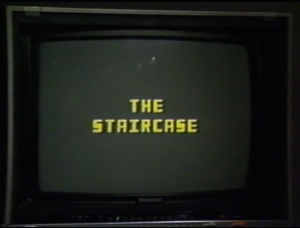By Matt Spry
Towards the end of high school, I helped produce a live call-in talk show that appeared on my local public-access television station. Given our influences and the overall lack of adult supervision — we once featured a cast member’s dramatization of a classroom finger-stapling incident — I’m not sure we would have created the same content had there been a public event that re-aired that material 20 or 25 years later. Fortunately, due to the efforts of several dedicated media professionals based in Somerville, MA, the Community Vault project does just that.
Local media makers and Somerville Community Access Television (SCATV) members, Amanda Wild, Emily Falcigno, Bryan McKeon, and Erica Jones (SCATV’s Director of Membership and Outreach) are members of the project’s program committee and were instrumental in shaping the theme of the inaugural event. The seed for this idea — the public exhibition of community media content from Massachusetts — was planted during months of casual conversation, and the group sought to create a retrospective program with an emphasis on the dynamic between past and present.
In parallel with SCATV’s own deep dive into its archives for suitable content, the station sent out a call for submissions to sister stations throughout Massachusetts (submissions were required in digital format). After reviewing anywhere from 100 to 200 hours of footage over several months, the committee chose submissions from media centers based in Cambridge, Somerville, Ashland, Northampton, Stoughton, and Easton. In any selection process driven by careful curation, plenty of worthy submissions must be excluded and that was no different here. According to Wild, the committee “didn’t start with specific criteria” for their selections, but a more intangible “fit” — in tone, context, and length — became an important aspect of the review. Falcigno described the challenge of making the program flow as “puzzle pieces all over the table, and parts of puzzle pieces fitting together and having a continuously morphing puzzle.” The result was a program that spanned over three decades of local media production, and ranged from the historically compelling to the surreal and comedic.
On a warm afternoon this past June, dozens of theatergoers packed into Somerville’s Davis Square Theater for a screening of the final product. The program began with the offscreen voice of sitting U.S. President Barack Obama as he spoke at Cambridge Public Library in 1995. In another sequence, a skeleton chatted away while wearing colonial garb. An amateur scientist earnestly guided the audience through the relationship between containers and the “invisible” force of physics. A young Tracy Chapman delivered a subdued but stirring musical performance. Through roughly two hours of programming, the audience was subjected to shifts in tone and subject matter, some subtle and others jarring, but they felt seamless and familiar — despite having no personal recollection of this content, I felt oddly nostalgic for the times and places in which they were produced. For others, however, the screening hit very close to home. Some attendees had even appeared on or helped produce the content that was shown. In a strange twist, a woman tending bar just outside the theater recalled appearing on an early 1990s show called “Somerville Dance Party,” the city’s awkward, adolescent take on the “Soul Train” format.
Falcigno noted that the theater experience “was totally different for me because watching it non-stop, editing, helping Amanda edit, and then seeing it on a large screen in a dark space without distractions — and also hearing how the audience was reacting — made me see it in a different light.” The audience howled with laughter where the curators had hoped (the aforementioned Somerville Dance Party) and grew quiet and pensive when more profound content, such as footage of couples gathered at Cambridge City Hall on the day same-sex marriage was legalized in 2004, was used to demonstrate how far our communities have come and how much further we have to go.
The short documentary, “The Staircase” — which chronicled the community push for a staircase to provide safe passage down a hazardous hill following a teen’s death — provided such a bridge to the past. In an email exchange last month, screening attendee and Executive Director of The Welcome Project, Warren Goldstein-Gelb, shared that, “[i]t was powerful to see Mystic residents from 30 years ago working hard and paying a big price (a child’s death) in organizing for the stairs to be constructed. I felt inspired by the efforts of Mystic youth and adults so many years ago, and believe that the documentary can inspire a new generation of residents, who, despite much improvement, still struggle for better connections between home and school all these years later.” That a 25-year-old segment of the screening can still resonate so strongly with the audience speaks to the effectiveness of the Community Vault team’s curation process, and the lasting connection between communities and the media they create.
While the program committee has no publicly stated plans for the future of the project, Jones hopes that such a showcase helps viewers “to see community media as not just the Wayne’s World kind of stuff” and that it illustrates to other media stations “a way to collaborate with different groups and members, and other stations, to put together something similar.”


